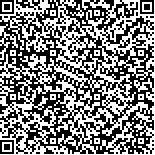下载中心
优秀审稿专家
优秀论文
相关链接
摘要

利用GNSS-R(Global Navigation Satellite System-Reflectometry)技术探测土壤水分是近年来一个新兴的研究方向。目前GNSS-R遥感观测中反射信号的接收与处理方式包括单天线与多天线两种模式,面向实际应用需求,GNSS-R遥感正在实现从最初的地基观测向空基、星载观测的转变。在推进GNSS-R土壤水分遥感技术业务化应用的过程中,必须首先进行适宜性分析,确定该技术探测的地理位置、空间分辨率与探测深度,然而目前对此尚未有系统、全面、定量的论述。本文针对适宜性分析中的3个关键因子分别进行理论分析与公式推导,明确相关概念的定义,并实现定量化描述,最终通过实际应用分析进一步诠释其应用价值。对于单天线模式地基观测,以美国板块边界观测计划PBO (Plate Boundary Observatory)土壤水分产品为例,分析镜面反射点的相对位置、第一级Fresnel反射椭圆簇的面积与时间序列土壤水分所代表的探测深度;对于多天线模式,以郑州上街区农田空基观测试验为例,得到基于航迹的栅格土壤水分空间分布并探讨其探测深度。本文能够为未来两种观测模式下地基、空基和星载GNSS-R遥感观测、北斗反射信号遥感,以及GNSS-R在农业、水文、生态等领域的实际应用提供理论指导。
Soil moisture measurements are important to hydrology, climatology, and agriculture. Global Navigation Satellite System reflectometry (GNSS-R) is a new and powerful tool for sensing soil moisture. Different methods have been proposed for the reception and processing of reflected signals, such as multiantenna and single-antenna patterns. Considerable efforts have been made on ground-based and airborne observations. Meanwhile, a number of space-borne missions have also been implemented. During the suitability analysis of soil moisture remote sensing via GNSS-R technique, three key factors have to be determined-the specular reflection point, spatial pixel size, and sensing depth in the soil-regardless of the extraction methods of the reflected signals or the types of the observation platform. However, no relatively comprehensive explanations are available in the current literature.
Theoretical analysis and formula derivation are conducted to systematically and quantitatively determine the extent of soil detection in three dimensions from the abovementioned aspects. First, the geographical position of the specular reflection point on the WGS84 ellipsoid surface is determined with an iterative algorithm. The effect of elevation between the real ground surface and the ellipsoid is discussed. Second, the first Fresnel zone is defined as the spatial pixel of the GNSS-R technique. The size of the pixel is regarded as the spatial resolution based on the concept of the equi-delay ellipse. Thirdly, the penetration distance of GNSS signals in soil is expressed. The concept of sensing depth is proposed on penetration distance and is based on the theory of microwave remote sensing. This concept makes soil moisture detection more describable and comparable.
To further analyze the feasibility of soil moisture remote sensing with GNSS-R, the results of two application scenarios are shown:(1) A ground-based GPS measurement was performed in Marshall, Colorado, US, from the Plate Boundary Observatory. This measurement corresponds to the single-antenna pattern. The relative location of the specular reflection points, average area of the first Fresnel ellipse clusters, and sensing depth of the time-series soil moisture are analyzed. (2)An airborne GNSS-R experiment was conducted in Zhengzhou to obtain soil moisture content. This measurement corresponds to the multiantenna pattern. The spatial distribution of estimated soil moisture with a certain resolution based on flight tracks and relevant sensing depth are manifested.
The results of the ground-based GPS measurement and airborne GNSS-R experiment are reasonable and convincing. Given that this study determined the extent of detected soil in three dimensions, this work provides theoretical basis for the precision evaluation of retrieved soil moisture. BeiDou mainly differs from GPS in the carrier frequency for remote sensing using GNSS reflected signals. Therefore, the results of this study provide references for future development of the BeiDou-R technique in China.

